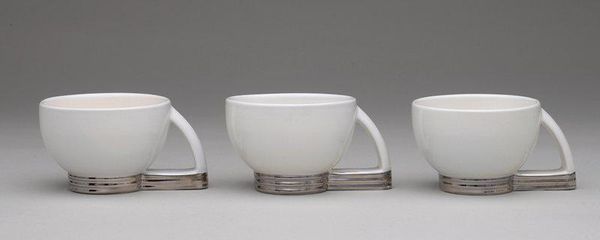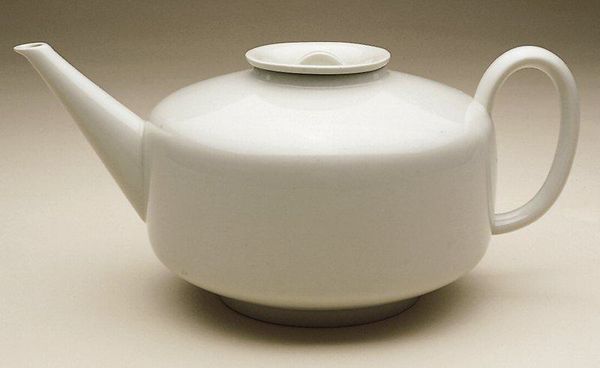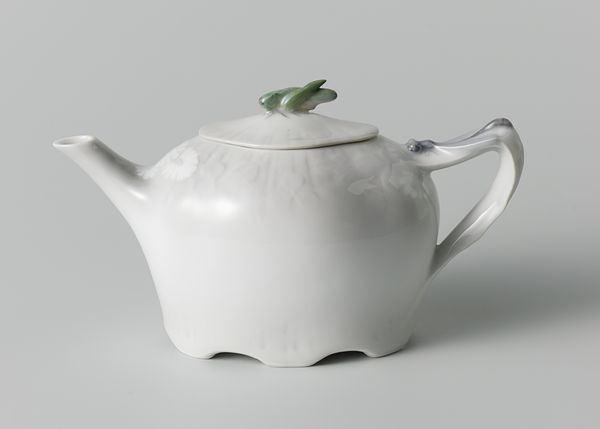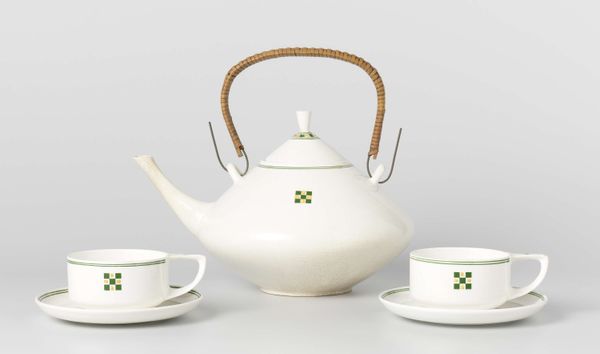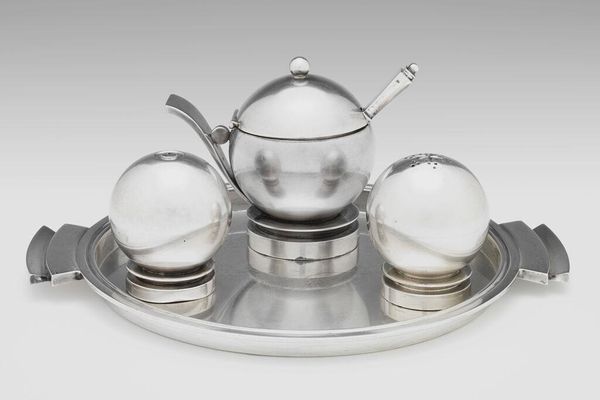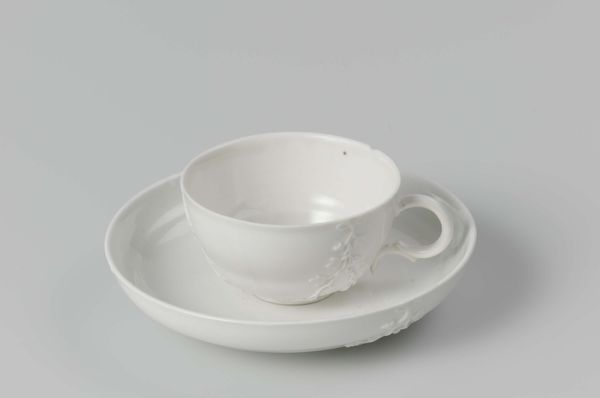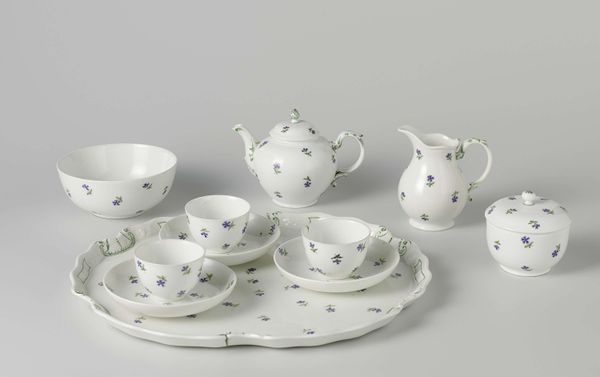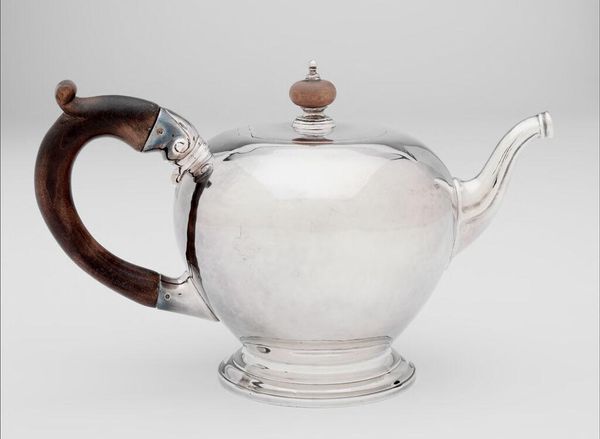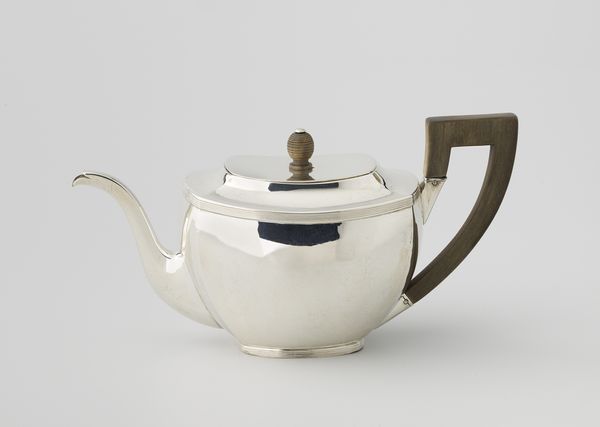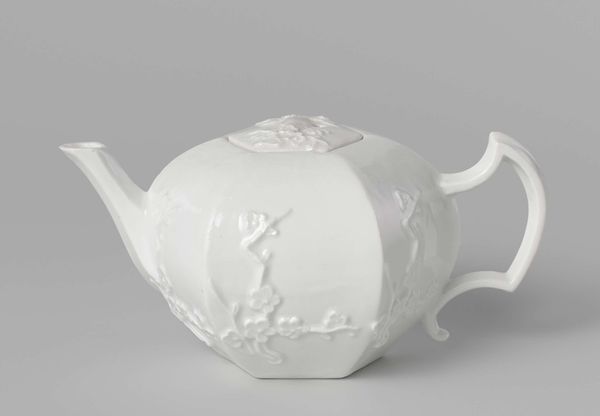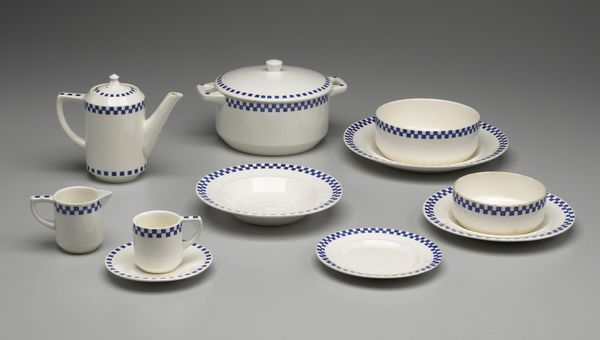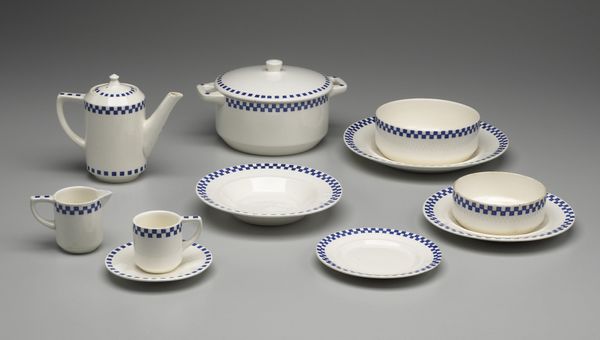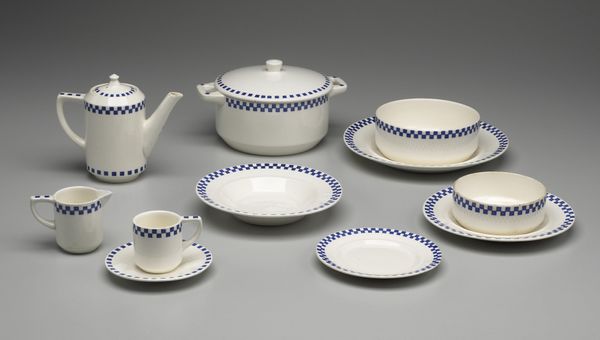
ceramic
#
art-deco
#
ceramic
#
ceramic
#
united-states
Copyright: No Known Copyright
Curator: Before us is "Cup," a ceramic work designed around 1938 by the American artist Paul Schreckengost. The pieces exemplify the Art Deco style and reside here at the Minneapolis Institute of Art. Editor: My initial impression is one of striking geometric purity. The smooth, white ceramic, punctuated by those elegant bands of silver, evokes a sense of streamlined modernity, almost machine-made. Curator: Absolutely, the simplified forms contribute to the overall design. The sphere of the teapot and the cylindrical cups emphasize clarity. Schreckengost clearly employs basic forms for his exploration. The strategic use of those metallic bands segments and defines the object’s form. Editor: Which brings to mind questions of industrialization. Ceramic production during this time was heavily influenced by mass manufacturing techniques, and here we see how craft absorbs and mimics this. Also, I want to examine its material composition: what clays were sourced and where? What kind of kilns were utilized, and the skill level involved in throwing, firing, and then applying the silver decoration? These are labor-intensive processes disguised by their refined surface. Curator: True, however, the pure forms aren't merely reflecting industry but distilling it. These elemental shapes, heightened by the reflective silver, elevate these functional vessels to the realm of sculpture, almost minimalist in execution, playing on shape relationships, negative space, and subtle variations of curvature. I wonder if you see any hints toward Bauhaus influences. Editor: Yes! Good point! The pursuit of functionality aligned with clean design absolutely resonates with the Bauhaus ethos, which further underlines an artist striving to merge art and utilitarianism for domestic spaces, even though luxury may dictate availability of use. Curator: Exactly. The set is visually captivating for me, particularly the use of the silver accents. They catch light, add a sense of depth, and also emphasize form and the shadows they reflect, enhancing one's perception. Editor: And ultimately the ceramic tells its own story, offering a window onto a specific time, where mechanized methods influenced craft aesthetics for better or worse in home interiors and routines. Curator: I see it through shape—each line of the curve accentuating our aesthetic and sensory experience through these streamlined geometric shapes. Editor: And I, of course, can’t overlook how the hands behind this composition tell a silent yet compelling story. Thank you for pointing out the pure form.
Comments
No comments
Be the first to comment and join the conversation on the ultimate creative platform.

